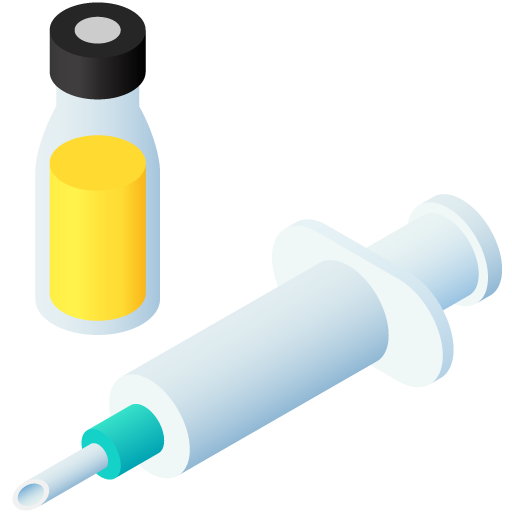Combination therapy
No results were found for your selected species
Bravecto
Active substance
ATC code
Species
Dogs.
Indications
For the treatment of tick and flea infestations in dogs.
This veterinary medicinal product is a systemic insecticide and acaricide that provides
- immediate and persistent flea (Ctenocephalides felis and Ctenocephalides canis) killing activity for 12 months;
- persistent tick killing activity from 3 days to 12 months after treatment for Ixodes ricinus and Dermacentor reticulatus;
- persistent tick killing activity from 7 days to 12 months after treatment for Ixodes hexagonus;
- persistent tick killing activity from 4 days to 12 months after treatment for Rhipicephalus sanguineus.
Fleas and ticks must attach to the host and commence feeding in order to be exposed to the active substance.
The veterinary medicinal product can be used as part of a treatment strategy for the control of flea allergy dermatitis (FAD).
For reduction of the risk of infection with Babesia canis canis via transmission by Dermacentor reticulatus from day 3 after treatment for up to 12 months. The effect is indirect due to the veterinary medicinal product’s activity against the vector.
For reduction of the risk of infection with Dipylidium caninum via transmission by Ctenocephalides felis from day 2 after treatment for up to 12 months. The effect is indirect due to the veterinary medicinal product’s activity against the vector.
Dose to be administered and administration route
Subcutaneous use.
Administer 0.1 ml of reconstituted suspension per kg body weight (equivalent to 15 mg fluralaner per kg body weight) subcutaneously, e.g. between the shoulder blades (dorso-scapular region) of the dog. The dog should be weighed at the time of dosing to calculate an accurate dose.
Underdosing could result in ineffective use and may favour development of resistance.
The following table may be used as a dosage guide:
|
Body weight (kg) |
Volume of the reconstituted suspension (ml) |
|
5 |
0.5 |
|
10 |
1 |
|
15 |
1.5 |
|
20 |
2 |
|
25 |
2.5 |
|
30 |
3 |
|
35 |
3.5 |
|
40 |
4 |
|
45 |
4.5 |
|
50 |
5 |
|
55 |
5.5 |
|
60 |
6 |
Calculate the dose accordingly for dogs weighing less than 5 kg or more than 60 kg.
Reconstitution of the suspension before first use:
Reconstitute 1 vial of powder with 15 ml of solvent. It is recommended to use an 18 G sterile transfer needle and a sterile 20 ml syringe for the reconstitution of the product.
1. Shake the fluralaner powder vial to break up any aggregates prior to reconstitution.
2. Invert the solvent vial at least 3 times until the content is visibly uniform.
3. First inject up to 14 ml of air into the solvent vial, then withdraw 15 ml of the solvent from the vial (image A). There is more solvent supplied in the vial than required for reconstitution. Discard the vial with the rest of the solvent.
4. Insert the 25 G vent needle into the top of the fluralaner powder vial (image B).
5. While rotating the vial horizontally in your hand, slowly transfer the 15 ml of solvent into the fluralaner powder vial to ensure complete wetting of the powder (image C).
 |
||
| A | B | C |
6. Once the solvent has been added, remove the vent needle and the transfer needle from the fluralaner powder vial. Discard the needles.
7. Shake the vial vigorously for at least 30 seconds until a thoroughly mixed suspension is formed. The reconstituted product is an opaque white to pale yellow slightly viscous suspension, practically free of aggregates.
8. The expiry date printed on the label of the glass vial refers to the powder as packaged for sale. After reconstitution, the suspension must be discarded within 3 months from the date of reconstitution. Write the discard date on the label of the glass vial.
Method of administration of the reconstituted suspension to the dog:
1. Determine the dose to be administered based on the dog’s body weight.
2. Use a sterile syringe and a sterile 18 G needle for administration.
3. The fluralaner powder will separate out of suspension upon standing. Before every use, shake the reconstituted vial vigorously for 30 seconds to achieve a uniform suspension.
4. It may be necessary to inject air into the vial prior to dosing.
5. To maintain a uniform suspension and accurate dosing, the dose should be administered within approximately 5 minutes after drawing it into the dosing syringe.
6. Inject the product subcutaneously, e.g. in the dorso-scapular region.
Do not puncture the stopper of the vial containing the reconstituted suspension more than 20 times.
For reconstitution after settling, shake the vial vigorously for at least 30 seconds to achieve a uniform suspension.
Treatment schedule:
For infestations with fleas and ticks, the need for and frequency of re-treatment(s) should be based on professional advice and should take into account the local epidemiological situation and the animal’s lifestyle. Treatment with this veterinary medicinal product may begin at any time of the year and can continue without interruption.
Adverse reactions
Dogs:
|
Common (1 to 10 animals / 100 animals treated): |
Injection site swelling1 |
|
Uncommon (1 to 10 animals / 1,000 animals treated): |
Decreased appetite Tiredness Hyperaemic mucous membranes |
|
Very rare (<1 animal / 10 000 animals treated, including isolated reports) |
Muscle tremor, ataxia, convulsion |
1Palpable and/or visual signs of non-inflammatory, non-painful swellings were detected from approximately 2 weeks after injection for a period of 1-2 weeks; swellings self-resolved.
Reporting adverse events is important. It allows continuous safety monitoring of a veterinary medicinal product. Reports should be sent, preferably via a veterinarian, to either the marketing authorisation holder or the national competent authority via the national reporting system. See also section ‘Contact details’ of the package leaflet for contact details.
Dispensing
POM-V - Prescription Only Medicine – VeterinarianSUMMARY OF PRODUCT CHARACTERISTICS
1. NAME OF THE VETERINARY MEDICINAL PRODUCT
Bravecto 150 mg/ml powder and solvent for suspension for injection for dogs
2. QUALITATIVE AND QUANTITATIVE COMPOSITION
Powder vial:
Active substance: Fluralaner 2.51 g
Solvent vial:
Each ml of solvent contains:
Excipient:
Benzyl alcohol 22.3 mg
Reconstituted suspension:
Each ml of reconstituted suspension contains: Active substance:
Fluralaner 150 mg
Excipient:
Benzyl alcohol 20.0 mg
For the full list of excipients, see section 6.1
3. PHARMACEUTICAL FORM
Powder and solvent for suspension for injection.
White to pale yellow powder and clear to opaque viscous solvent.
The reconstituted product is an opaque white to pale yellow slightly viscous suspension, practically free from aggregates.
4. CLINICAL PARTICULARS
4.1 Target species
Dogs.
4.2 Indications for use, specifying the target species
For the treatment of tick and flea infestations in dogs.
This veterinary medicinal product is a systemic insecticide and acaricide that provides
- immediate and persistent flea (Ctenocephalides felis and Ctenocephalides canis) killing activity for 12 months;
- persistent tick killing activity from 3 days to 12 months after treatment for Ixodes ricinus and Dermacentor reticulatus;
- persistent tick killing activity from 7 days to 12 months after treatment for Ixodes hexagonus;
- persistent tick killing activity from 4 days to 12 months after treatment for Rhipicephalus sanguineus.
Fleas and ticks must attach to the host and commence feeding in order to be exposed to the active substance.
The veterinary medicinal product can be used as part of a treatment strategy for the control of flea allergy dermatitis (FAD).
For reduction of the risk of infection with Babesia canis canis via transmission by Dermacentor reticulatus from day 3 after treatment for up to 12 months. The effect is indirect due to the veterinary medicinal product’s activity against the vector.
For reduction of the risk of infection with Dipylidium caninum via transmission by Ctenocephalides felis from day 2 after treatment for up to 12 months. The effect is indirect due to the veterinary medicinal product’s activity against the vector.
4.3 Contraindications
Do not use in cases of hypersensitivity to the active substance or to any of the excipients.
4.4 Special warnings for each target species
Parasites need to start feeding on the host to become exposed to fluralaner; therefore, the risk of the transmission of parasite borne diseases (including Babesia canis canis and D. caninum) cannot be completely excluded.
Unnecessary use of antiparasitics, or use deviating from the instructions given, may increase the resistance selection pressure and lead to reduced efficacy. The decision to use the veterinary medicinal product should be based on confirmation of the parasitic species and burden, or of the risk of infestation based on its epidemiological features, for each individual animal.
The possibility that other animals in the same household can be a source of reinfection with parasites should be considered, and these should be treated as necessary with an appropriate veterinary medicinal product.
4.5 Special precautions for use
Special precautions for use in animals
Safety of the product has not been assessed in dogs with pre-existing epilepsy. Therefore, use with caution in such dogs based on a benefit/risk assessment by the responsible veterinarian.
In the absence of available data, the veterinary medicinal product should not be used on dogs less than 6 months old.
Special precautions to be taken by the person administering the veterinary medicinal product to animals
Care should be taken to avoid accidental self-injection and dermal exposure when administering this veterinary medicinal product.
In case of accidental self-injection, contact a physician and show the label or package leaflet. Wash hands after use.
Special precautions for the protection of the environment Not applicable.
Other precautions Not applicable.
4.6 Adverse reactions (frequency and seriousness) Dogs:
|
Common (1 to 10 animals / 100 animals treated): |
Injection site swelling1 |
|
Uncommon (1 to 10 animals / 1,000 animals treated): |
Decreased appetite Tiredness Hyperaemic mucous membranes |
|
Very rare (<1 animal / 10 000 animals treated, including isolated reports) |
Muscle tremor, ataxia, convulsion |
1Palpable and/or visual signs of non-inflammatory, non-painful swellings were detected from approximately 2 weeks after injection for a period of 1-2 weeks; swellings self-resolved.
Reporting adverse events is important. It allows continuous safety monitoring of a veterinary medicinal product. Reports should be sent, preferably via a veterinarian, to either the marketing authorisation holder or the national competent authority via the national reporting system. See also section ‘Contact details’ of the package leaflet for contact details.
4.7 Use during pregnancy, lactation or lay
The safety of the veterinary medicinal product has not been established during pregnancy and lactation.
Use only according to the benefit-risk assessment by the responsible veterinarian.
4.8 Interaction with other medicinal products and other forms of interaction
Fluralaner is highly bound to plasma proteins and might compete with other highly bound active substances such as non-steroidal anti-inflammatory drugs (NSAIDs) and the coumarin derivative warfarin. Incubation of fluralaner in the presence of carprofen or warfarin in dog plasma at maximum expected plasma concentrations did not reduce the protein binding of fluralaner, carprofen or warfarin.
During clinical field testing, no interactions between the veterinary medicinal product and routinely used veterinary medicinal products were observed.
4.9 Amount(s) to be administered and administration route
Subcutaneous use.
Administer 0.1 ml of reconstituted suspension per kg body weight (equivalent to 15 mg fluralaner per kg body weight) subcutaneously, e.g. between the shoulder blades (dorso-scapular region) of the dog. The dog should be weighed at the time of dosing to calculate an accurate dose.
Underdosing could result in ineffective use and may favour development of resistance.
The following table may be used as a dosage guide:
|
Body weight (kg) |
Volume of the reconstituted suspension (ml) |
|
5 |
0.5 |
|
10 |
1 |
|
15 |
1.5 |
|
20 |
2 |
|
25 |
2.5 |
|
30 |
3 |
|
35 |
3.5 |
|
40 |
4 |
|
45 |
4.5 |
|
50 |
5 |
|
55 |
5.5 |
|
60 |
6 |
Calculate the dose accordingly for dogs weighing less than 5 kg or more than 60 kg.
Reconstitution of the suspension before first use:
Reconstitute 1 vial of powder with 15 ml of solvent. It is recommended to use an 18 G sterile transfer needle and a sterile 20 ml syringe for the reconstitution of the product.
1. Shake the fluralaner powder vial to break up any aggregates prior to reconstitution.
2. Invert the solvent vial at least 3 times until the content is visibly uniform.
3. First inject up to 14 ml of air into the solvent vial, then withdraw 15 ml of the solvent from the vial (image A). There is more solvent supplied in the vial than required for reconstitution. Discard the vial with the rest of the solvent.
4. Insert the 25 G vent needle into the top of the fluralaner powder vial (image B).
5. While rotating the vial horizontally in your hand, slowly transfer the 15 ml of solvent into the fluralaner powder vial to ensure complete wetting of the powder (image C).

A B C
6. Once the solvent has been added, remove the vent needle and the transfer needle from the fluralaner powder vial. Discard the needles.
7. Shake the vial vigorously for at least 30 seconds until a thoroughly mixed suspension is formed. The reconstituted product is an opaque white to pale yellow slightly viscous suspension, practically free of aggregates.
8. The expiry date printed on the label of the glass vial refers to the powder as packaged for sale. After reconstitution, the suspension must be discarded within 3 months from the date of reconstitution. Write the discard date on the label of the glass vial.
Method of administration of the reconstituted suspension to the dog:
1. Determine the dose to be administered based on the dog’s body weight.
2. Use a sterile syringe and a sterile 18 G needle for administration.
3. The fluralaner powder will separate out of suspension upon standing. Before every use, shake the reconstituted vial vigorously for 30 seconds to achieve a uniform suspension.
4. It may be necessary to inject air into the vial prior to dosing.
5. To maintain a uniform suspension and accurate dosing, the dose should be administered within approximately 5 minutes after drawing it into the dosing syringe.
6. Inject the product subcutaneously, e.g. in the dorso-scapular region.
Do not puncture the stopper of the vial containing the reconstituted suspension more than 20 times.
For reconstitution after settling, shake the vial vigorously for at least 30 seconds to achieve a uniform suspension.
Treatment schedule:
For infestations with fleas and ticks, the need for and frequency of re-treatment(s) should be based on professional advice and should take into account the local epidemiological situation and the animal’s lifestyle. Treatment with this veterinary medicinal product may begin at any time of the year and can continue without interruption.
4.10 Overdose (symptoms, emergency procedures, antidotes), if necessary
Following the subcutaneous administration of 3 and 5 times the recommended dose of 15 mg fluralaner/kg body weight every 4 months for a total of 6 doses
(days 1, 120, 239, 358, 477 and 596) to 6 month old puppies, the only treatment-related finding was limited to injection site swellings that resolved over time.
The active substance fluralaner was well tolerated in Collies with a deficient multidrug-resistance-protein 1 (MDR1 -/-) following single oral administration at 3 times the maximum recommended dose (168 mg/kg body weight).
Since the peak systemic exposure to fluralaner after subcutaneous administration is not higher compared to oral administration, the subcutaneous injection of the veterinary medicinal product is considered safe in MDR1(-/-) dogs.
4.11 Withdrawal period(s) Not applicable.
5. PHARMACOLOGICAL PROPERTIES
Pharmacotherapeutic group: Ectoparasiticides for systemic use.
ATCvet code: QP53BE02
5.1 Pharmacodynamic properties
Fluralaner is an acaricide and insecticide. It is efficacious against ticks (Ixodes spp., Dermacentor spp., and Rhipicephalus sanguineus), and fleas (Ctenocephalides spp.) on dogs.
Fluralaner reduces the risk of infection with Babesia canis canis via transmission by Dermacentor reticulatus by killing the ticks within 48 hours, before disease transmission occurs.
Fluralaner reduces the risk of infection with Dipylidium caninum via transmission by Ctenocephalides felis by killing the fleas before disease transmission occurs.
I. ricinus and D. reticulatus ticks already present on the dog prior to administration of the veterinary medicinal product are killed within 72 hours. R. sanguineus ticks already present on the dog prior to administration of the veterinary medicinal product are killed within 96 hours. Newly-infested ticks are killed within 48 hours from one week to 12 months after treatment.
Fleas already present on the dog prior to administration of the veterinary medicinal product are killed within 48 hours. Newly-infested fleas are killed within 24 hours from one week to 12 months after treatment.
Fluralaner has a high potency against ticks and fleas by exposure via feeding, i.e., it is systemically active on target parasites.
Fluralaner is a potent inhibitor of parts of the arthropod nervous system by acting antagonistically on ligand-gated chloride channels (GABA-receptor and glutamatereceptor).
In molecular on-target studies on insect GABA receptors of fleas and flies, fluralaner is not affected by dieldrin resistance.
In in vitro bio-assays, fluralaner is not affected by proven field resistances against amidines (tick), organophosphates (tick, mite), cyclodienes (tick, flea, fly), macrocyclic lactones (sea lice), phenylpyrazoles (tick, flea), benzophenyl ureas (tick), pyrethroids (tick, mite) and carbamates (mite).
The veterinary medicinal product contributes towards the control of the environmental flea populations in areas to which treated dogs have access.
Newly emerged fleas on a dog are killed before viable eggs are produced. An in vitro study also demonstrated that very low concentrations of fluralaner stop the production of viable eggs by fleas. The flea life cycle is broken due to the rapid onset of action and long-lasting efficacy against adult fleas on the animal and the absence of viable egg production.
5.2 Pharmacokinetic particulars
Fluralaner is systemically absorbed from the injection site, with median Tmax observed on day 37 (range day 30 – day 72). The half-life in blood ranges from 92 to 170 days in 6-month-old puppies.
The prolonged persistence and slow elimination from plasma and the lack of extensive metabolism provide effective concentrations of fluralaner for the duration of the inter-dosing interval. Unchanged fluralaner is excreted in faeces and to a very low extent in urine.
6. PHARMACEUTICAL PARTICULARS
6.1 List of excipients
Powder vial: None
Solvent vial:
Benzyl alcohol
Carmellose sodium
Poloxamer 124
Disodium phosphate dihydrate
Hydrochloric acid, concentrated
Sodium hydroxide
Water for injections
Reconstituted suspension:
Benzyl alcohol
Carmellose sodium
Poloxamer 124
Disodium phosphate dihydrate
Hydrochloric acid, concentrated
Sodium hydroxide
Water for injections
6.2 Major incompatibilities
In the absence of compatibility studies, this veterinary medicinal product must not be mixed with other veterinary medicinal products.
6.3 Shelf life
Shelf life of the veterinary medicinal product as packaged for sale: 3 years. Shelf life after reconstitution according to directions: 3 months.
6.4 Special precautions for storage
This veterinary medicinal product does not require any special temperature storage conditions.
After reconstitution, store below 30 ºC. Do not freeze the suspension.
6.5 Nature and composition of immediate packaging
Type I glass vials closed with bromobutyl rubber stoppers and aluminium flip-off caps.
Each cardboard box contains 1, 2, 5 or 10 sets of a fluralaner powder vial (2.51 g fluralaner), a solvent vial (16 ml solvent), and a sterile 25 G vent needle. Not all pack sizes may be marketed.
6.6 Special precautions for the disposal of unused veterinary medicinal product or waste materials derived from the use of such products
Medicines should not be disposed of via wastewater.
Any unused veterinary medicinal product or waste materials derived from such veterinary medicinal products should be disposed of in accordance with local requirements.
The veterinary medicinal product should not enter water courses as fluralaner may be dangerous for fish and other aquatic organisms.
7. MARKETING AUTHORISATION HOLDER
MSD Animal Health UK Limited
Walton Manor
Walton
Milton Keynes
MK7 7AJ
8. MARKETING AUTHORISATION NUMBER
Vm 01708/5091
9. DATE OF FIRST AUTHORISATION
24 June 2024
10. DATE OF REVISION OF THE TEXT
June 2024
PROHIBITION OF SALE, SUPPLY AND/OR USE
Not applicable.
11. CLASSIFICATION OF VETERINARY MEDICINAL PRODUCT
Veterinary medicinal product subject to prescription.
Find more product information by searching for the ‘Product Information Database’ or ‘PID’ on www.gov.uk.
Approved: 24 June 2024
![]()
 TRUSTED SOURCE
TRUSTED SOURCE









